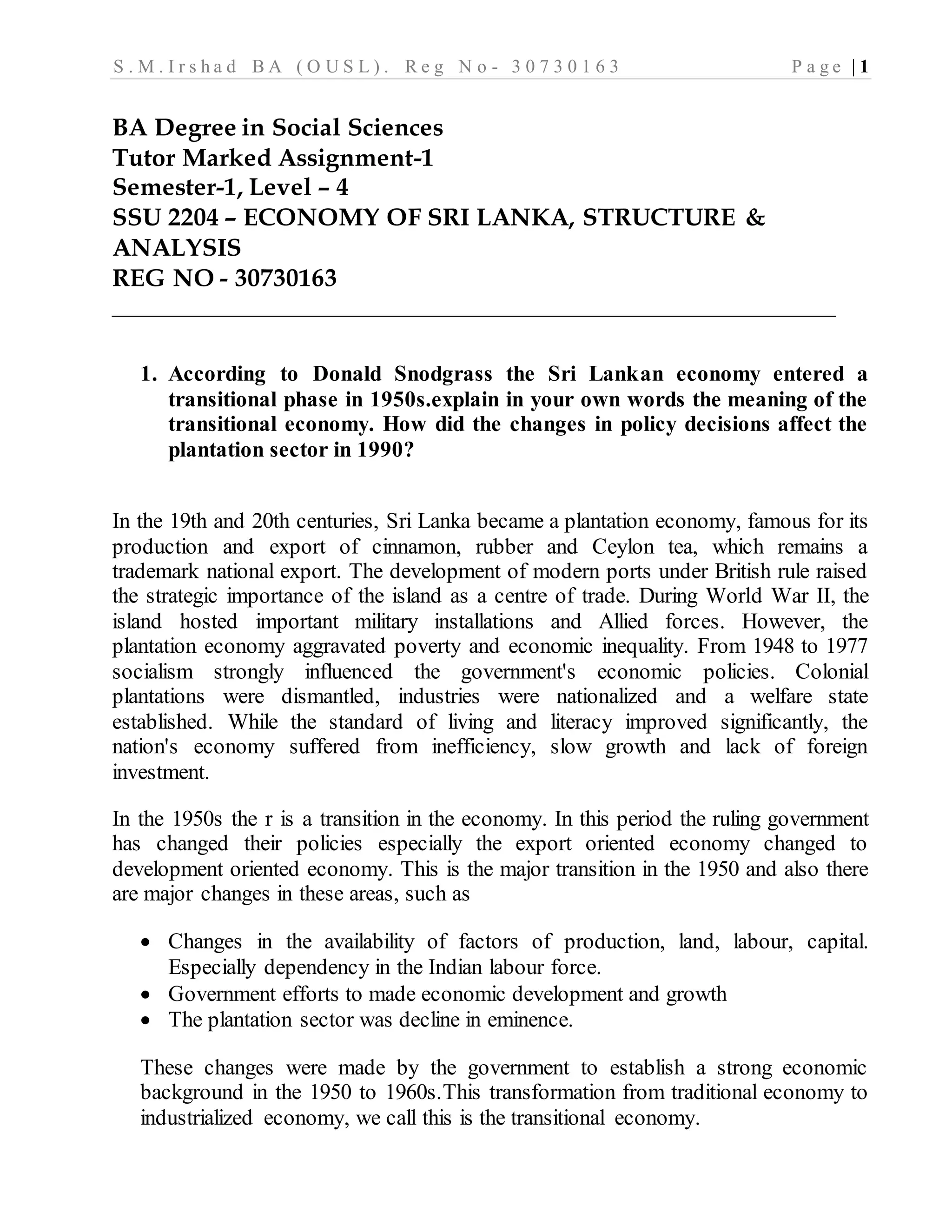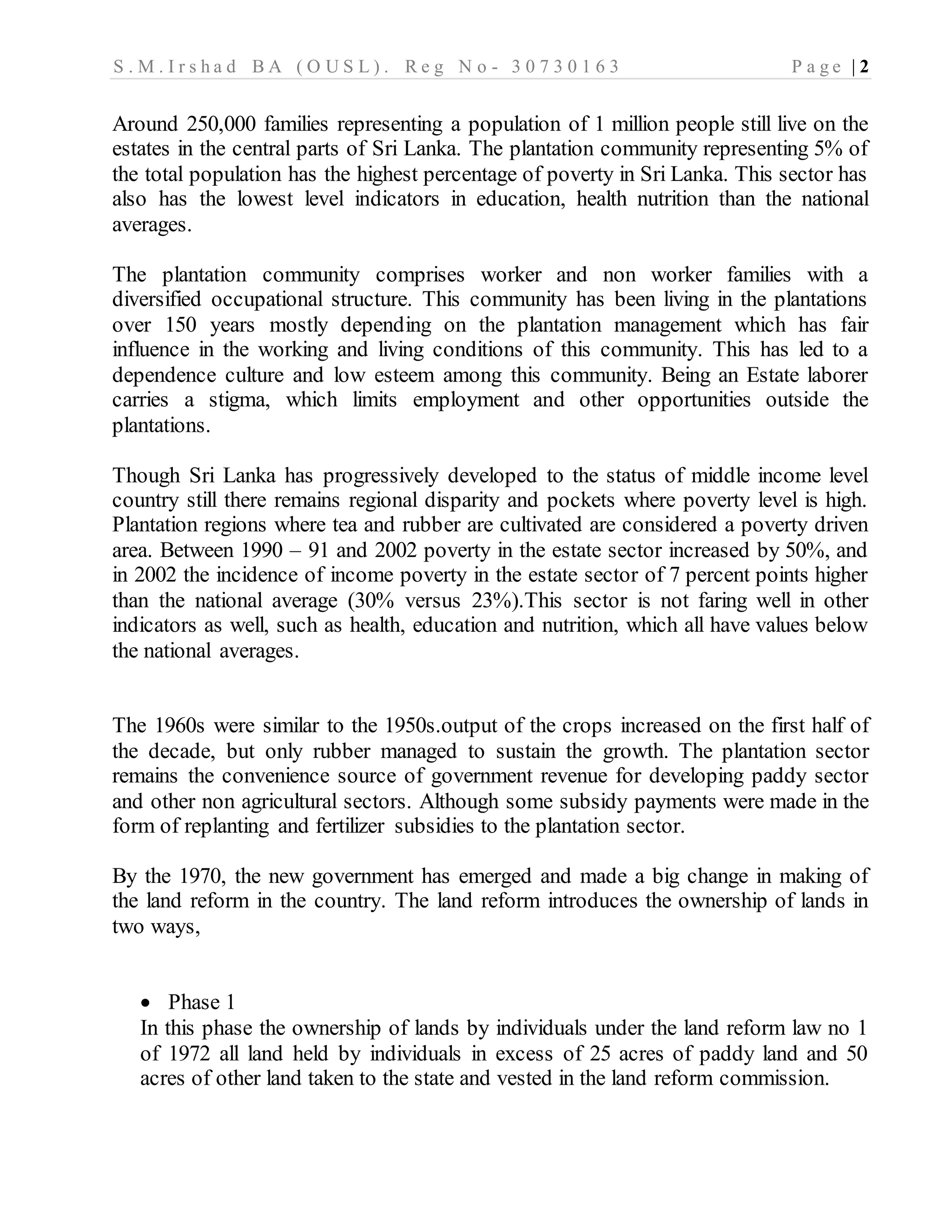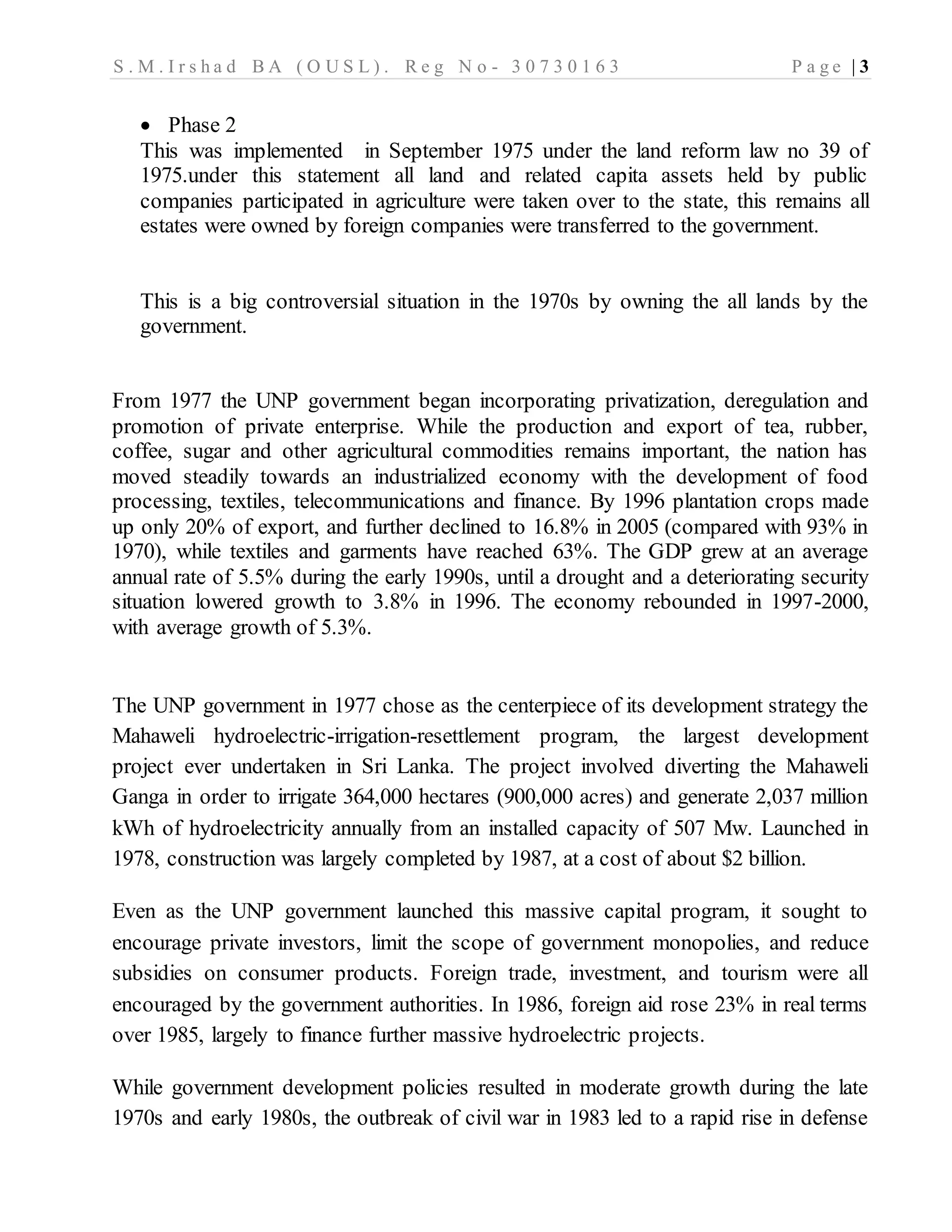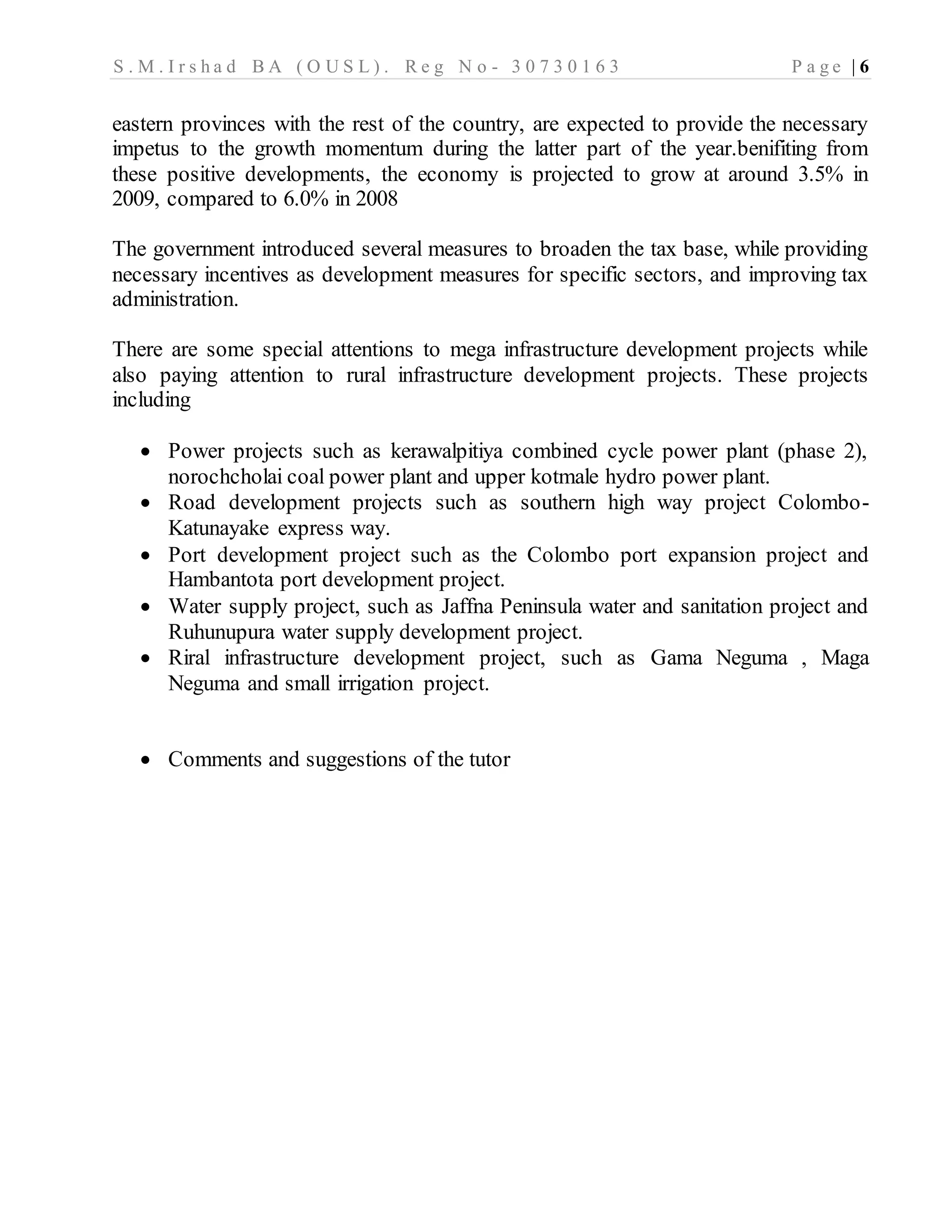The document discusses Sri Lanka's economic transition from a plantation economy in the 1950s to a more diversified economy by the 1990s. It provides details on:
1) Sri Lanka's transition from an export-oriented to development-oriented economy in the 1950s, which led to changes in factors of production and a decline in the prominence of the plantation sector.
2) How the plantation sector was affected by land reforms in the 1970s that transferred ownership of estates from foreign companies to the government.
3) How fiscal policy and government expenditures played a role in Sri Lanka's economic development from the 1950s to 1990s, through subsidies, investments in infrastructure, and tax policies. The government pursued different fiscal





